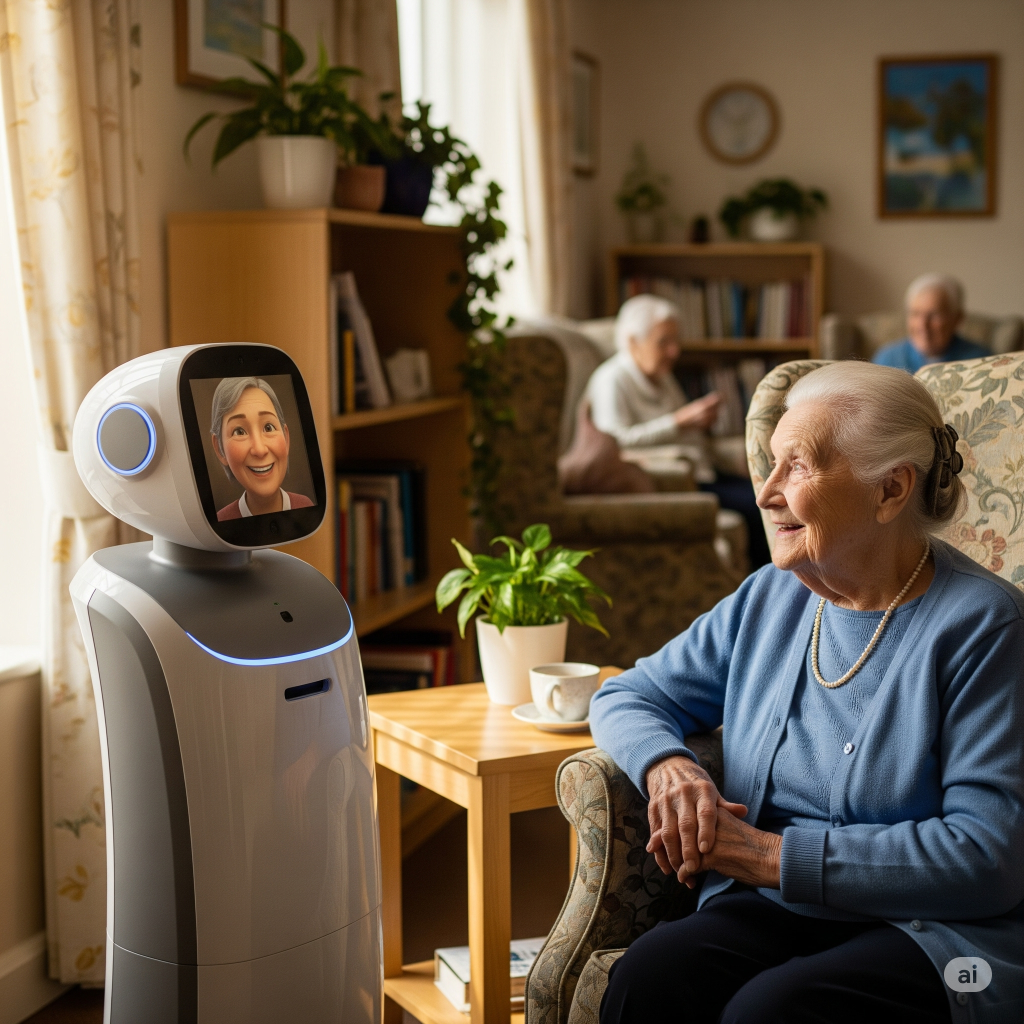In an ordinary-looking nursing home in Sweden, a conversation is happening between a senior resident and an unexpected companion—not a nurse, not a family member, but a robot named Furhat.
Furhat is not a typical robot. Unlike machines that walk or clean, this socially assistive robot (SAR) has no arms or legs. Instead, it has a lifelike projected face, complete with subtle expressions and simulated conversation skills. The result is something surprisingly human: a robot that talks, listens, reacts, and even remembers.
And it’s making a real difference.
A New Approach to Emotional Care in Elderly Populations
As societies around the world face an aging population and a growing shortage of caregivers, loneliness and isolation among the elderly have become silent but serious health threats. According to numerous studies, social isolation can be as damaging to health as smoking or obesity.
That’s where Furhat—and robots like it—step in.
Developed in Sweden and used in studies at institutions such as KTH Royal Institute of Technology and the University of Manchester, Furhat has been deployed in pilot programs aimed at enhancing emotional well-being in senior living environments.
Furhat is designed to:
- Engage in real-time conversation
- Recognize emotional cues in speech and facial expressions
- Offer personalized interactions, from games to guided reminiscence
- Adapt its tone and behavior based on user responses
This kind of interaction goes beyond pre-scripted answers. Furhat uses natural language processing and facial projection to simulate the subtlety and flow of human conversation. In many cases, seniors respond to Furhat as if it were a person.

What Makes Furhat Different?
Unlike traditional robots, Furhat is not mobile. It doesn’t assist with physical tasks or move around the room. Instead, its power lies in empathetic communication.
The robot’s expressive face is projected onto a translucent mask, allowing it to simulate blinking, smiling, frowning, and other expressions in sync with speech. It can speak multiple languages, modulate its tone, and even change its personality depending on user preferences.
In one study, elderly users engaged with Furhat in conversations about family memories, music, or their favorite childhood foods. Some even played trivia games or shared daily reflections. These seemingly simple interactions led to measurable improvements in mood and social engagement.
Socially Assistive Robots: The Rise of Companionship Technology
Furhat is part of a larger trend in robotics: the development of Socially Assistive Robots (SARs)—machines designed not to provide physical care, but emotional and cognitive support.
A 2022 pilot involving the Ryan robot showed that seniors found empathic robots significantly more engaging and enjoyable than scripted or purely functional machines. The key was emotional intelligence: robots that could listen, respond, and “connect” were more likely to be trusted and welcomed by users.
While SARs like Furhat do not replace human caregivers, they offer consistent, stigma-free companionship in environments where human interaction may be limited.
Potential Applications and Ethical Considerations
As these technologies advance, many are asking important questions:
- Can robots reduce loneliness at scale, especially in overburdened eldercare systems?
- How emotionally attached should people become to machines that simulate empathy?
- Where should we draw the ethical line between artificial companionship and real human relationships?
Researchers and ethicists continue to study these issues carefully. For now, most agree that tools like Furhat should augment—not replace—human care. Used wisely, they could help bridge gaps in emotional support, particularly in aging societies where human caregivers are in short supply.
The Future of Companionship in Care
Furhat may not walk or cook, but its ability to talk, listen, and adapt makes it uniquely powerful in environments where emotional connection is often missing. It doesn’t just provide entertainment or information—it offers presence.
In a world where elderly individuals increasingly face isolation, a conversation with a robot might seem impersonal. But for many residents, it’s a voice that listens, a face that smiles, and a friend who remembers.
And sometimes, that’s exactly what’s needed.

Leave a Reply